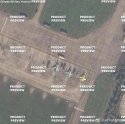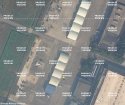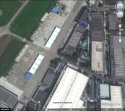Mostly correct. The weight and size penalty is pretty minor though - it's the same length as the non-vectoring AL-31F nozzle AFAIK and compared to Salyut's AVEN/PYBBN-style design, weight increase (per engine) is only about 15kg higher IIRC (for a Flanker, the equivalent of the difference between a skinny or fat pilot in total

). That's pretty inconsequential on a ~1600kg engine (a difference of not even 0.1%!) and the Su-35S configuration has other advantages: all cross sections along the nozzle axis remain almost perfectly circular regardless of vectoring angle, which eliminates a potential source of thrust losses.
BTW, the Izd. 30 nozzle as flown recently appears to follow the same concept as the Izd. 117/117S engine. It's not certain that the Salyut nozzle will be used.
No idea to be honest. It's a relatively minor variation on the basic concept (first used by Salyut), so whatever advantages .or disadvantages it has are likely rather minor.







